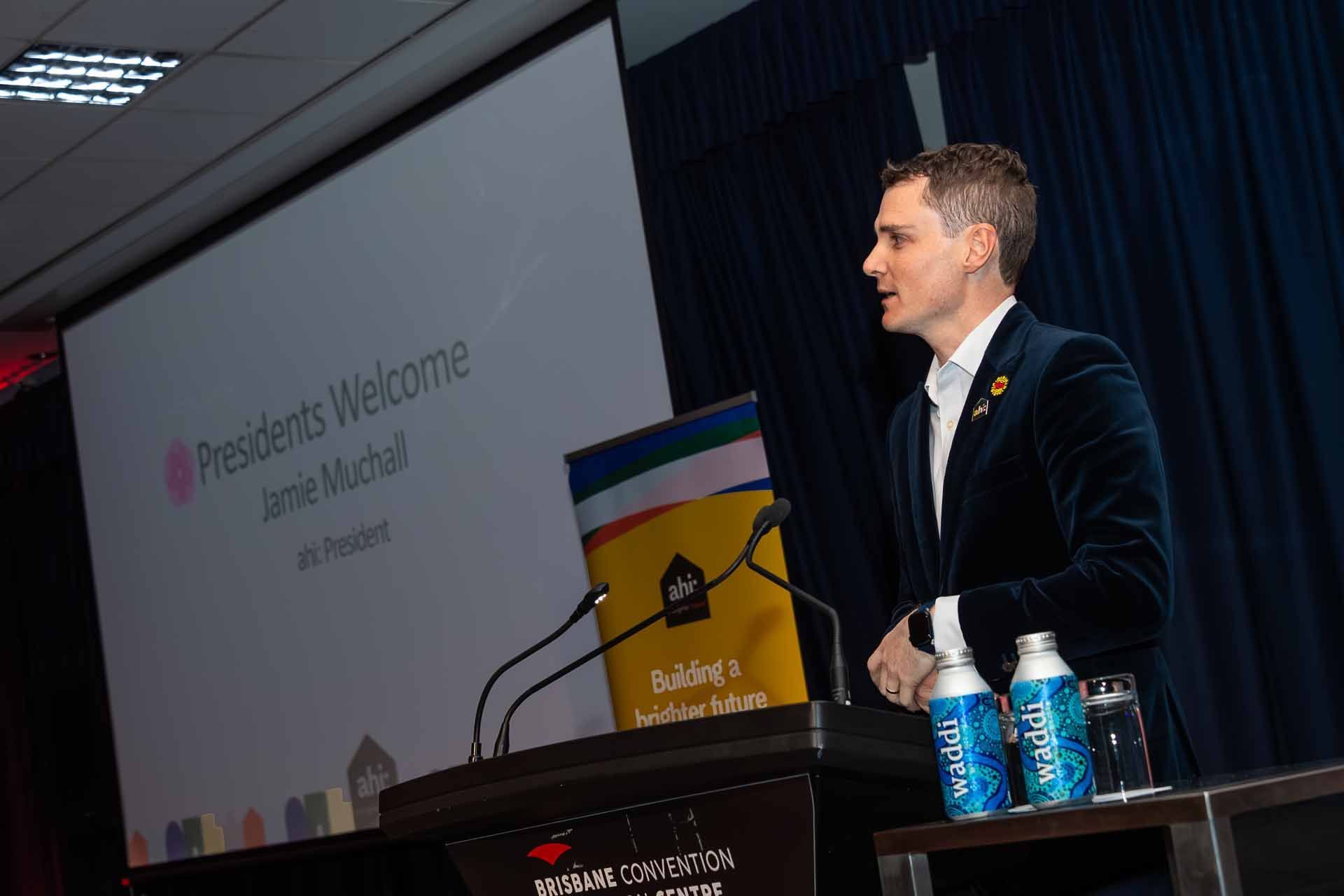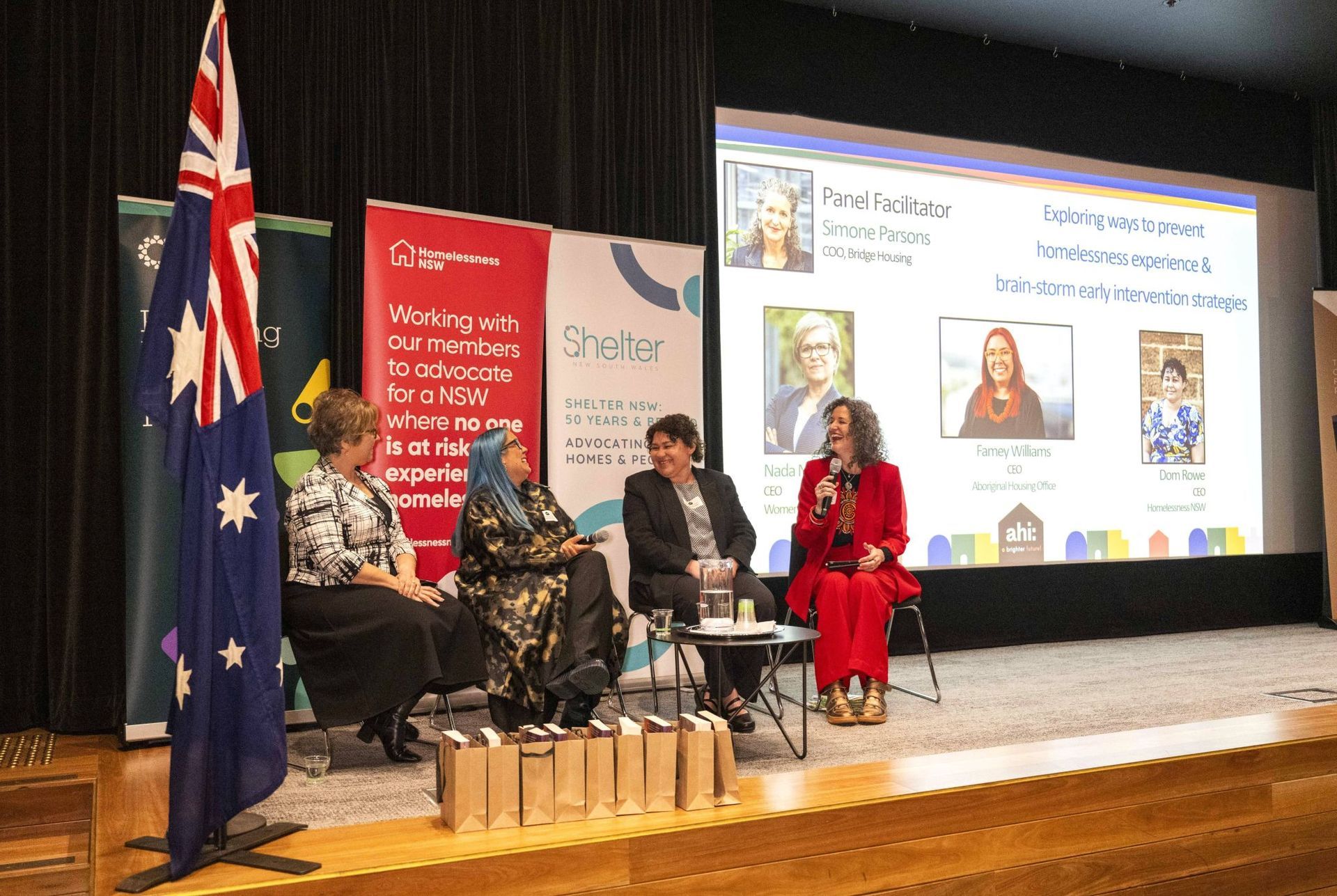As Jamie Muchall ends his term as ahi: President, he speaks to HousingWORKS about his reflections of the last few years, including navigating the choppy seas of a pandemic.
‘Challenging’ and ‘exciting’ are the words that Jamie Muchall uses to describe his four-year tenure as ahi: President. Taking over the role unopposed from Andrew Davis in November 2019, it didn’t take long for the honeymoon period to come to an abrupt halt.
The Board had just appointed a new CEO, and accordingly, Jamie, like many of his fellow Board members, expected the additional set of hands at the wheel would reduce some of the workload previous ahi: presidents had managed alongside their ‘day jobs’. Concurrently, the ahi’s fundamentals indicated significant growth was in store for the coming year.
“That was in November,” Jamie recalls, “and then we had a strategic planning session in February of 2020…”
On the plane back home to Brisbane, he was concerned that media reports of a serious virus sweeping like wildfire across China and Italy — and had been discussed by those in attendance at the planning day—was worth paying more attention. Needless to say, this turned out to be right. As was the case around the globe, the impacts of the Coronavirus pandemic were devastating.
Not surprisingly, Jamie says urgent rearrangement of the organisation’s priorities to navigate through the ensuing chaos was the biggest challenge he faced as ahi: President.
“The then CEO deserves much credit for this, but I think we did a really good job pivoting to online training and doing things virtually,” he explains. “We had plans for in-house workshops with leadership teams and those sorts of things, which obviously had to go on hiatus, but we really did pivot to an online model, and I think we as an organisation did really well with that.”
"Another headwind for the ahi: came in the form of reduction in funding from various state governments during the darkest days of the pandemic."

Another headwind for the ahi: came in the form of reduction in funding from various state governments during the darkest days of the pandemic. This meant the ahi: relied more than ever on membership revenue – not a great state of affairs when housing professionals, like millions of others in Australia and Aotearoa New Zealand, were struggling to deal with working from home or, in many cases, unable to work at all.
“We lost a lot of government funding, so now we rely more than ever on the membership and learning and development revenue that we get,” Jamie clarifies.
Reflecting further on his Presidential tenure, Jamie believes negotiating change within the Institute at the beginning 2023 and balancing that “with the financials of the organisation as they were, and leaving the role with a surplus in the budget” is something he’s extremely proud of having achieved: “It was a very big turnaround for us and a really exciting one.”
The decision to appoint Kellie Dunn permanently as Chief Executive Officer of the ahi: is another highlight: “Putting Kellie into that role is one of the best decisions we’ve made as a board. She's definitely the right person to take us forward over the next few years – for us and for our members.”
Kellie was initially introduced to the ahi: in a training and development role but had taken on much more responsibility than her initial job description. He and the Board are grateful for the work she’s managed to perform while operating under immense pressure.
"As much as his time in the role required some seriously heavy lifting, the opportunity to meet ahi: members from across Australia and Aotearoa New Zealand is something Jamie cherishes."
As much as his time in the role required some seriously heavy lifting, the opportunity to meet ahi: members from across Australia and Aotearoa New Zealand is something Jamie cherishes, particularly at events like the Brighter Future Awards.
“I loved travelling and getting around Australia and Aotearoa New Zealand to meet all of the committed and wonderful housing professionals that we support, and who are our members,” he admits. “To see the projects that they've been working on, to hear how the challenges they're facing are as similar in New Zealand as they are in Western Australia, and as they are in Victoria, has been inspiring. It also meant I got to get out and meet a lot of our branch members and local members, which was a gift.”
"I wouldn't have taken on the role if I didn't believe in what the ahi: offers."
“I also have to commend the ahi: team. Working with them has been really inspiring and humbling. The directors and the staff are committed to our members and our mission. It was kind of in the trenches, as you can imagine, for the last year or so. And they're wonderful people, so it was a great pleasure to walk beside them all. I have a genuine belief in what we do as an organisation. I wouldn't have taken on the role if I didn't believe in what the ahi: offers.”
When asked if there’s anybody else he wishes to acknowledge, Jamie’s dry humour comes to the fore. “I could go on for ages! Do I have to worry about that music you play off people with at the Oscars?” he begins with a laugh.
"We probably asked a little bit too much, to be honest."
“Obviously, without Kellie Dunn, we would not be here. And Lisa [McBean] and Sharon [Senior] who've committed so much to the ahi:—we probably asked a little bit too much, to be honest,” he says. He also acknowledges his preceding President, Andrew Davis, who – as Jamie puts it – was “a font of sage advice and knowledge at the start of his term”. And then there’s the branch committees that “really do all of the work for ahi: on the ground.”
An unintended participant in Jamie’s presidential role was Rebecca Oelkers, his CEO at BHC: “I’m not sure Rebecca realised how much work I was going to need to put into the ahi: over the course of that term,” he muses, “but she really supported me with all the time that I needed for the ahi: – all the travel that I was doing. I really appreciate that.”
But that’s not all – there’s one more person Jamie adds to his rollcall of acknowledgements: “My wife, Sarah, who put up with, again, a lot heavier than expected workload and travel over the period of the four years.”
With his time as ahi: President done and dusted, Jamie’s in no doubt that the incumbent, Sean Kelly, is the right person at the right time.
“It's definitely time for someone new,” he says. “Being President is such a privilege. You want to share that privilege around. I want to see more housing professionals have a chance to enjoy the role, but I think it's time for a change and I'm really appreciative of what Sean's doing.”
'Would he do it again?' we ask in wrapping up the interview. “In a heartbeat,” says Jamie.
Everyone at the ahi: thanks Jamie wholeheartedly for his contributions as President to the Institute and wishes him all the best for his future endeavours.
Share This Article
Other articles you may like






